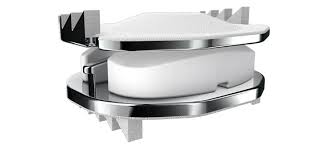 LDR: GOOD NEWS AT FIVE YEARS (Orthopedics This Week)
LDR: GOOD NEWS AT FIVE YEARS (Orthopedics This Week)
LDR Holding Corporation has announced the publication of “Prospective, Randomized Comparison of One-level Mobi-C Cervical Total Disc Replacement vs. Anterior Cervical Discectomy and Fusion: Results at 5-year Follow-up” in the International Journal of Spine Surgery.
As indicated in the March 08, 2016 news release, the researchers found that, “five-year results demonstrate the safety and efficacy of Total Disc Replacement (TDR) with the Mobi-C as a viable alternative to Anterior Cervical Discectomy and Fusion (ACDF),” and also notes that “in comparison to ACDF, the TDR group preserved motion and patients exhibited lower rates of adjacent segment degeneration through 60 months. Also, a significantly lower rate of subsequent surgeries was seen in the TDR group, indicating an additional benefit of this treatment option.”
LDR President and CEO Christophe Lavigne commented, “LDR is very pleased to see additional five-year follow-up data being published. This paper in particular, as the first review of the composite overall success for one-level Mobi-C at five years, represents the kind of peer-reviewed publication of long-term Level I data that, we believe, payers have viewed as a significant milestone and threshold that supports a positive coverage decision for treatment. The data is also encouraging to surgeons and patients looking to cervical TDR as a new standard of care for treating symptomatic degenerative disc disease with radiculopathy or myeloradiculopathy.”
Michael S. Hisey, M.D., an orthopedic spine surgeon at Texas Back Institute, was lead author on this paper. Dr. Hisey commented to OTW, “It was interesting to find out that, after reviewing some of the best fusion data ever gathered, that the operation that we had thought of as very good and as the gold standard had left room for improvement. For example, the re-operation rate and adverse event rates were less in the artificial disc group than in the fusion group. It is gratifying to know that I have an operation to offer my patients with cervical disc disease that has been shown to have better results by many measures and should cause fewer issues with their adjacent, asymptomatic discs.”
“When we began the Mobi-C project, it was with the hope that we could decrease the adjacent segment degeneration when compared to what happens when a fusion is used. When we were able to demonstrate this at two years and see that the differences increase at five years, it gave us an alternative to fusion that created fewer problems with the patients’ adjacent discs. The promise, then, is fewer surgeries down the road for progression of the patient’s disease and savings of health care dollars.”
Senior Manager Renee Day told OTW, “LDR will capitalize on the 2015 success of Mobi-C with continued focus on surgeon education and long-term clinical evidence. As of the end of 2015, over 2,200 surgeons have been trained on Mobi-C since U.S. launch. LDR will continue to invest in surgeon education in 2016 to support Mobi-C and our other exclusive technology products. Additionally, LDR believes the growing weight of long-term clinical evidence, combined with the published cost-effectiveness data, and NASS [North American Spine Society] coverage recommendation in support of one and two-level disc replacement will drive penetration of cervical disc replacement into the estimated $1.2 billion U.S. cervical fusion market.”